
Itanagar: The Heart of Arunachal Pradesh
Discover Itanagar: A blend of history, culture, and natural beauty in the heart of Arunachal Pradesh, offering a unique and tranquil experience for travelers.
Itanagar, the capital of Arunachal Pradesh, is a hidden gem in the northeastern part of India. Surrounded by lush green hills and rich cultural heritage, this city offers an unparalleled experience for travelers seeking tranquility and adventure. Start your journey by exploring the Ita Fort, from which the city derives its name. This historical fort, built in the 14th-15th century, offers a glimpse into the region's past. Nearby, you can visit the Jawaharlal Nehru State Museum to learn about the diverse tribes of Arunachal Pradesh and their unique traditions. Nature enthusiasts will find solace in the Ganga Lake (Gyakar Sinyi), a serene spot perfect for boating and picnicking. The nearby Zoological Park provides an opportunity to see some of the region's wildlife up close. For a spiritual experience, visit the Theravada Buddhist Gompa, which offers breathtaking views of the surrounding countryside. Itanagar is also a gateway to several trekking routes and outdoor activities. From here, you can embark on journeys to explore the pristine forests, rivers, and valleys of Arunachal Pradesh. The local markets, buzzing with activity, are perfect for picking up traditional handicrafts and souvenirs. With its blend of history, culture, and natural beauty, Itanagar is a must-visit destination for anyone looking to explore the unexplored parts of India.
Local tips in Itanagar
- Carry a valid Inner Line Permit (ILP) as it is required for visiting Arunachal Pradesh.
- Best time to visit Itanagar is between October and April when the weather is pleasant.
- Local cuisine is a must-try; don't miss dishes like bamboo shoot, thukpa, and momos.
- Hire a local guide for trekking to get the best experience and ensure safety.
- Respect local customs and traditions, especially when visiting tribal areas.
Itanagar: The Heart of Arunachal Pradesh
Itanagar, the capital of Arunachal Pradesh, is a hidden gem in the northeastern part of India. Surrounded by lush green hills and rich cultural heritage, this city offers an unparalleled experience for travelers seeking tranquility and adventure. Start your journey by exploring the Ita Fort, from which the city derives its name. This historical fort, built in the 14th-15th century, offers a glimpse into the region's past. Nearby, you can visit the Jawaharlal Nehru State Museum to learn about the diverse tribes of Arunachal Pradesh and their unique traditions. Nature enthusiasts will find solace in the Ganga Lake (Gyakar Sinyi), a serene spot perfect for boating and picnicking. The nearby Zoological Park provides an opportunity to see some of the region's wildlife up close. For a spiritual experience, visit the Theravada Buddhist Gompa, which offers breathtaking views of the surrounding countryside. Itanagar is also a gateway to several trekking routes and outdoor activities. From here, you can embark on journeys to explore the pristine forests, rivers, and valleys of Arunachal Pradesh. The local markets, buzzing with activity, are perfect for picking up traditional handicrafts and souvenirs. With its blend of history, culture, and natural beauty, Itanagar is a must-visit destination for anyone looking to explore the unexplored parts of India.
When is the best time to go to Itanagar?
Iconic landmarks you can’t miss
Indira Gandhi Park
Discover serenity at Indira Gandhi Park in Itanagar, where lush landscapes, vibrant flowers, and cultural events create an unforgettable experience.

Polo Park
Experience the natural beauty and tranquility of Polo Park in Naharlagun, Arunachal Pradesh, a perfect retreat for peace and recreation.

Gompa Buddhist Temple - Itanagar, Arunachal Pradesh, India
Discover peace and spirituality at Gompa Buddhist Temple, a stunning architectural gem nestled in the heart of Itanagar, Arunachal Pradesh.

Ita Fort
Explore Ita Fort, a historical landmark in Itanagar, Arunachal Pradesh, that offers a captivating glimpse into the region's rich cultural heritage and breathtaking views.

Hotel Pybss
Discover comfort at Hotel Pybss in Itanagar, Arunachal Pradesh, where modern amenities meet the beauty of the Northeastern landscapes.

Waii International Hotel
Experience unparalleled comfort and convenience at Waii International Hotel, your ideal base for exploring the vibrant culture and beauty of Itanagar.

Itanagar Zoo
Explore the breathtaking Itanagar Zoo in Arunachal Pradesh, a family-friendly destination showcasing diverse wildlife and lush landscapes.

Hotel Donyi Polo Ashok
Experience the cultural richness and natural beauty of Arunachal Pradesh at Hotel Donyi Polo Ashok, your perfect base in Itanagar.

Cygnett Inn Trendz, Itanagar
Discover modern comfort and warm hospitality at Cygnett Inn Trendz, Itanagar, the perfect base for your Arunachal Pradesh adventure.

Hotel SC Continental
Discover comfort in the heart of Itanagar at Hotel SC Continental, your perfect base for exploring the rich culture and stunning landscapes of Arunachal Pradesh.

Legi Complex
Discover a vibrant shopping experience at Legi Complex, Itanagar, where local culture meets modern retail.

Ganga market
Discover Ganga Market in Itanagar, a vibrant marketplace filled with local crafts, delicious street food, and a true taste of Arunachal Pradesh's culture.

Hotel Todo
Experience comfort and convenience at Hotel Todo, your ideal base for exploring the vibrant culture and stunning landscapes of Itanagar, Arunachal Pradesh.

State Museum
Discover the cultural richness of Arunachal Pradesh at the State Museum in Itanagar, showcasing art and history from diverse indigenous tribes.

ITAMOTO TRAVEL
Explore Arunachal Pradesh's breathtaking landscapes and rich culture with Itamoto Travel, your trusted travel agency in Itanagar.

Unmissable attractions to see
Indira Gandhi Park
Discover the beauty and tranquility of Indira Gandhi Park, a lush green oasis in Itanagar, perfect for relaxation and leisure activities.

Gompa Buddhist Temple - Itanagar, Arunachal Pradesh, India
Explore the serene Gompa Buddhist Temple in Itanagar, Arunachal Pradesh—an architectural marvel nestled in nature's embrace, perfect for spiritual seekers.
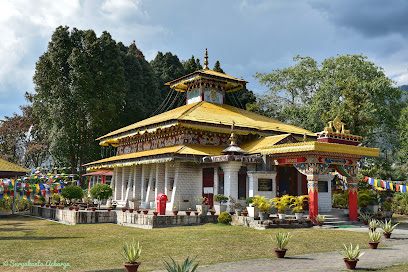
Ita Fort
Explore Ita Fort in Itanagar, a historical landmark rich in heritage and surrounded by lush nature, perfect for history enthusiasts and nature lovers alike.

Itanagar Zoo
Discover the diverse wildlife at Itanagar Zoo, a captivating sanctuary in Arunachal Pradesh showcasing tigers, leopards, and Himalayan black bears.

Energy Park
Experience tranquility and natural beauty at Energy Park, a serene retreat in Itanagar, Arunachal Pradesh, perfect for relaxation and leisure.
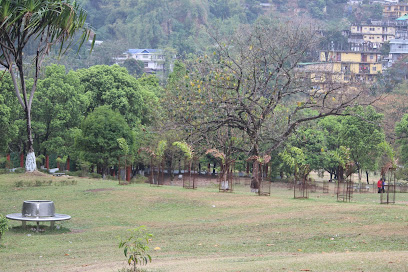
State Museum
Explore the cultural richness and heritage of Arunachal Pradesh at the State Museum in Itanagar, a must-visit for culture enthusiasts and tourists alike.

Rathor park
Discover tranquility in Rathor Park, a lush green space in Itanagar, perfect for relaxation and enjoying nature's beauty.

Haang View Point
Experience nature's serenity at Haang View Point in Itanagar, featuring stunning views, a peaceful fishing pond, and perfect picnic spots.

Donyi polo water fall
Explore the natural beauty of Donyi Polo Waterfall in Arunachal Pradesh, a serene escape surrounded by lush landscapes and stunning vistas.

Lonam Picnic Spot Poma
Experience nature’s tranquility at Lonam Picnic Spot Poma, a serene escape in Arunachal Pradesh perfect for picnics and cultural immersion.

Clock Tower
Discover the architectural beauty and vibrant culture of Itanagar at the iconic Clock Tower, a must-visit landmark in Northeast India.

Gandhi Udyan park
Discover the serene beauty of Gandhi Udyan Park in Itanagar, a lush green oasis perfect for relaxation and cultural immersion.

View Point - Above Gompa
Experience breathtaking views and tranquil ambiance at the View Point Above Gompa, a must-visit tourist attraction in Itanagar.

GOYA PICNIC PARK
Experience the serenity of Goya Picnic Park in Itanagar, where nature meets relaxation in a picturesque setting perfect for picnics and outdoor activities.

Secretariate wall
Explore the Secretariate Wall in Itanagar, a beautiful blend of history, architecture, and local culture in Arunachal Pradesh.
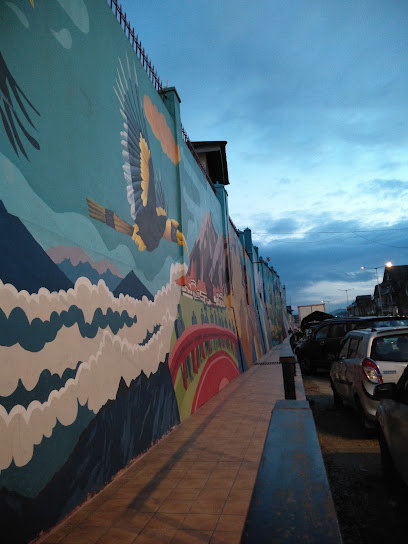
Essential places to dine
A B C RESTAURANT
Discover authentic Chinese cuisine at A B C Restaurant in Itanagar – where every dish tells a story!
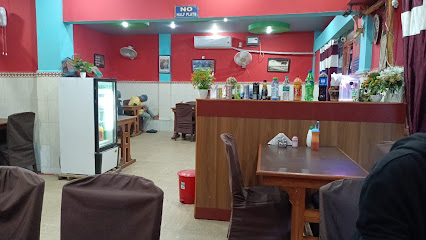
THE MARQUEE RESTOBAR
Discover the vibrant culinary scene at The Marquee Restobar in Itanagar—where exquisite flavors meet an inviting atmosphere.

Domino's Pizza
Indulge in delicious pizzas at Domino's Pizza in Itanagar - where taste meets convenience!
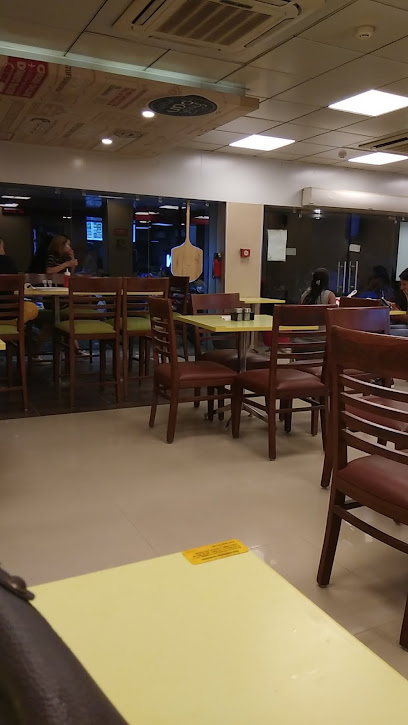
Mumma's kitchen
Discover a delightful fusion of local and international flavors at Mumma's Kitchen in Itanagar.

Moti Mahal Delux
Savor authentic Indian flavors at Moti Mahal Delux, a must-visit restaurant in Itanagar offering diverse dishes in a warm atmosphere.

Choe-Wang’s Kitchen
Discover authentic Arunachali cuisine at Choe-Wang’s Kitchen in Itanagar - where every dish celebrates local tradition.

Chaat Ka Chaska
Experience the authentic taste of Indian street food at Chaat Ka Chaska in Itanagar, where every bite tells a story.
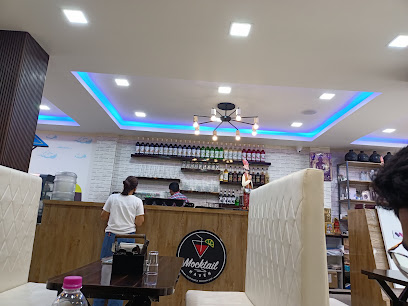
Korean Restaurant Caffe Moa
Savor the essence of Korea at Caffe Moa - where tradition meets taste in every dish.

New Malabar Family Restaurant
Discover the authentic flavors of Keralan cuisine at New Malabar Family Restaurant in Itanagar - where every dish tells a story.

J's Jaika
Discover the exquisite flavors of fine dining at J's Jaika in Itanagar - where tradition meets innovation in every dish.

uspizza itanagar
Discover delicious pizzas at US Pizza Itanagar - where fresh ingredients meet unforgettable flavors in a welcoming atmosphere.

Quartz King Restaurant
Experience the best of Chinese and Indian flavors at Quartz King Restaurant in Itanagar - where tradition meets taste.

Poong Nest Restaurant Cum Bar
Discover authentic grilled flavors and a lively bar scene at Poong Nest Restaurant Cum Bar in Itanagar - perfect for every palate.

Gurung Hotel
Discover the flavors of India at Gurung Hotel in Itanagar - your gateway to authentic Indian dining.

Fruit Lyrics
Explore the best of Asian fusion cuisine at Fruit Lyrics in Itanagar – where every dish tells a story!

Markets, malls and hidden boutiques
V-Mart - Itanagar
Explore a variety of clothing and local products at V-Mart in Itanagar, where shopping meets culture and convenience.

Ossum Store
Discover Ossum Store in Itanagar, a vibrant shopping mall offering a mix of local and international brands, perfect for unique souvenirs and retail therapy.

Value & Variety
Discover a vibrant clothing store in Itanagar, offering a unique blend of traditional and modern fashion styles for every traveler.

RELIANCE SMART POINT JIOMART ITANAGAR
Discover a world of convenience and local flavors at Reliance Smart Point JioMart in Itanagar, your go-to grocery destination.

The Raymond Shop
Explore a variety of fashionable clothing and unique styles at The Raymond Shop in Itanagar, a premier destination for fashion lovers.
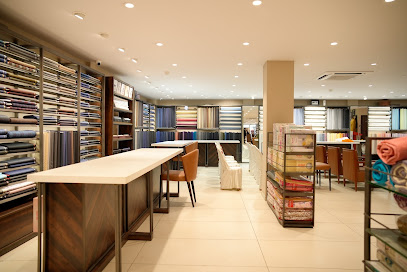
Global Desi Itanagar
Discover trendy women's fashion at Global Desi Itanagar, where local culture meets contemporary style in a shopping experience unlike any other.

Mumuso - Itanagar, Arunachal Pradesh
Explore Mumuso in Itanagar - Your one-stop variety store for trendy fashion, unique gifts, and home essentials in Arunachal Pradesh.

Van Heusen - Itanagar
Explore contemporary fashion at Van Heusen in Itanagar, where quality meets style amidst the beauty of Arunachal Pradesh.

MINISO
Explore MINISO in Itanagar for trendy, affordable finds in a vibrant shopping environment.

Tribal Emporium
Explore Tribal Emporium in Itanagar for unique handicrafts and souvenirs that reflect Arunachal Pradesh's vibrant culture and artistry.

R.R. COSMETIC AND GIFT CORNER
Explore R.R. Cosmetic and Gift Corner for unique souvenirs and local beauty products in Itanagar, Arunachal Pradesh.

BIBA
Explore BIBA in Itanagar for a unique blend of traditional and contemporary women's fashion, along with exquisite accessories to enhance your style.

Happy Home Itanagar
Explore a diverse collection of unique gifts and home decor at Happy Home Itanagar, where local artistry meets delightful shopping.

Fancy Mall
Explore the vibrant shopping experience at Fancy Mall, Itanagar - where local charm meets global brands.

OJU CRAFT CENTRE, Itanagar
Explore OJU Craft Centre in Itanagar for unique clothing that embodies the cultural heritage of Arunachal Pradesh, perfect for souvenirs and personal style.

Essential bars & hidden hideouts
THE MARQUEE RESTOBAR
Experience the vibrant culture and delectable cuisine at The Marquee Restobar in Itanagar, where every visit is a celebration of flavors.
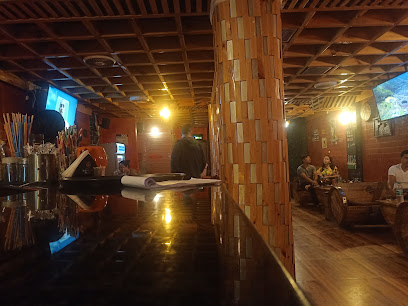
Poong Nest Restaurant Cum Bar
Discover the vibrant flavors of Arunachal Pradesh at Poong Nest Restaurant Cum Bar, where grilling meets a lively bar atmosphere.

13 Old Spirit Pub, Cafe & Karaoke
Experience the vibrant blend of food, drinks, and karaoke at 13 Old Spirit Pub, Cafe & Karaoke in Itanagar, a must-visit for every traveler.

The Green Street Bar
Experience the vibrant nightlife of Itanagar at The Green Street Bar, where great drinks and good company await.

Abo Tani Beer Bar and Restaurant
Discover the vibrant flavors and warm hospitality of Abo Tani Beer Bar and Restaurant in Itanagar, Arunachal Pradesh.

Bar Code
Experience the thrill of live sports and delicious cuisine at Bar Code, Itanagar's premier sports bar and grill.

18 O'clock Gastropub
Discover the vibrant culinary scene at 18 O'clock Gastropub in Itanagar, where local flavors meet contemporary dining in a lively atmosphere.

Club XYZ, Itanagar
Discover the energy of Itanagar at Club XYZ, a vibrant bar offering an extensive drink menu and a lively atmosphere perfect for socializing.

Rasoi Restaurant Cum Bar
Experience the vibrant flavors of Itanagar at Rasoi Restaurant Cum Bar, where delicious meals and refreshing drinks await every visitor.
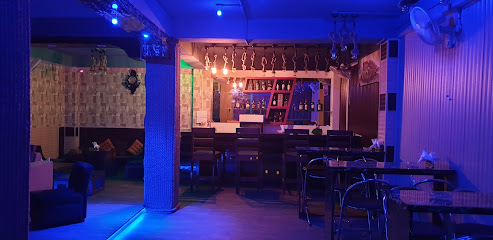
Black Sparrow Food & cocktail
Discover the vibrant atmosphere and local flavors at Black Sparrow Food & Cocktail in Itanagar, Arunachal Pradesh, perfect for relaxation and socializing.

The NEXUS
Discover The NEXUS in Arunachal Pradesh, a lively bar offering local brews and entertainment in a vibrant atmosphere, perfect for unwinding after a day of exploration.

ARISTA, Bar Restro and Catering
Experience the vibrant nightlife of Itanagar at ARISTA, where delightful food and refreshing drinks await in a lively atmosphere.

Game On Sports Bar & Restro
Experience the thrill of sports and delicious dining at Game On Sports Bar & Restro in Itanagar, the ultimate destination for food and sports lovers.

Apoo Bar
Discover the vibrant nightlife of Itanagar at Apoo Bar, a local gem offering a delightful range of drinks in a welcoming atmosphere.

Euphoria Restobar
Discover the vibrant atmosphere and local flavors at Euphoria Restobar, a premier destination for food and drink in Itanagar.

Local Phrases
-
- Helloनमस्ते
[Namaste] - Goodbyeअलविदा
[Alvida] - Yesहाँ
[Haan] - Noनहीं
[Nahi] - Please/You're welcomeकृपया
[Kripaya] - Thank youधन्यवाद
[Dhanyavad] - Excuse me/Sorryक्षमा कीजिए
[Kshama keejiye] - How are you?आप कैसे हैं?
[Aap kaise hain?] - Fine. And you?ठीक हूँ। और आप?
[Theek hoon. Aur aap?] - Do you speak English?क्या आप अंग्रेज़ी बोलते हैं?
[Kya aap Angrezi bolte hain?] - I don't understandमुझे समझ नहीं आया
[Mujhe samajh nahi aaya]
- Helloनमस्ते
-
- I'd like to see the menu, pleaseकृपया मेनू देखना चाहूँ
[Kripaya menu dekhna chahoon] - I don't eat meatमैं मांस नहीं खाता/खाती
[Main maans nahi khaata/khaati] - Cheers!चियर्स!
[Cheers!] - I would like to pay, pleaseकृपया मुझे भुगतान करने दीजिए
[Kripaya mujhe bhugtan karne dijiye]
- I'd like to see the menu, pleaseकृपया मेनू देखना चाहूँ
-
- Help!मदद!
[Madad!] - Go away!चले जाओ!
[Chale jao!] - Call the Police!पुलिस को बुलाओ!
[Police ko bulaao!] - Call a doctor!डॉक्टर को बुलाओ!
[Doctor ko bulaao!] - I'm lostमैं खो गया/गई हूँ
[Main kho gaya/gayi hoon] - I'm illमुझे बीमारी है
[Mujhe bimari hai]
- Help!मदद!
-
- I'd like to buy...मैं खरीदना चाहूँगा/चाहूँगी...
[Main khareedna chaahunga/chaahungi...] - I'm just lookingमैं बस देख रहा/रही हूँ
[Main bas dekh raha/rahi hoon] - How much is it?यह कितने का है?
[Yeh kitne ka hai?] - That's too expensiveयह बहुत महंगा है
[Yeh bahut mehnga hai] - Can you lower the price?क्या आप कीमत कम कर सकते हैं?
[Kya aap keemat kam kar sakte hain?]
- I'd like to buy...मैं खरीदना चाहूँगा/चाहूँगी...
-
- What time is it?अब कितने बजे हैं?
[Ab kitne baje hain?] - It's one o'clockएक बजे हैं
[Ek baje hain] - Half past (10)दस बजे तकरीबन
[Das baje takriban] - Morningसुबह
[Subah] - Afternoonदोपहर
[Dopahar] - Eveningशाम
[Shaam] - Yesterdayकल
[Kal] - Todayआज
[Aaj] - Tomorrowकल
[Kal] - 1एक
[Ek] - 2दो
[Do] - 3तीन
[Teen] - 4चार
[Char] - 5पांच
[Paanch] - 6छह
[Chhah] - 7सात
[Saath] - 8आठ
[Aath] - 9नौ
[Nau] - 10दस
[Das]
- What time is it?अब कितने बजे हैं?
-
- Where's a/the...?...कहाँ है?
[...kahan hai?] - What's the address?पता क्या है?
[Pata kya hai?] - Can you show me (on the map)?क्या आप मुझे दिखा सकते हैं (नक्शे पर)?
[Kya aap mujhe dikhha sakte hain (nakshay par)?] - When's the next (bus)?अगली (बस) कब है?
[Agli (bus) kab hai?] - A ticket (to ....)एक टिकट (...के लिए)
[Ek ticket (...ke liye)]
- Where's a/the...?...कहाँ है?
History of Itanagar
-
Itanagar, the capital of Arunachal Pradesh, has a rich history that dates back to ancient times. The region is believed to have been inhabited since the prehistoric era, with archaeological findings such as pottery, tools, and stone carvings testifying to its early human settlement. The area was historically significant due to its strategic location along trade routes connecting Tibet, Myanmar, and the Brahmaputra Valley.
-
The name 'Itanagar' is derived from the Ita Fort, a historical fortification whose ruins still stand in the heart of the city. Constructed from large bricks, the fort dates back to the 14th-15th centuries during the Ahom rule. The Ita Fort, meaning 'Fort of Bricks,' is a testament to the architectural ingenuity of the Chutia Kingdom. It was built under the reign of King Ramachandra, and its remnants offer a glimpse into the region's medieval heritage.
-
The Ahom Dynasty, which ruled over large parts of present-day Assam and Arunachal Pradesh from the 13th to the early 19th century, left a significant impact on Itanagar and its surroundings. The Ahoms were instrumental in the cultural and economic development of the region. Their influence is evident in the local architecture, administrative systems, and the assimilation of various tribal communities into a larger socio-political framework.
-
During the British colonial period, the region of Itanagar was relatively unexplored and remained part of the North East Frontier Agency (NEFA). The British established administrative outposts and conducted expeditions to map and understand the area. Itanagar's strategic importance was recognized, but it remained largely isolated due to its challenging terrain and dense forests.
-
After India gained independence in 1947, the region of Arunachal Pradesh witnessed significant administrative and developmental changes. Itanagar was designated as the capital of Arunachal Pradesh in 1974, leading to a period of rapid urbanization and infrastructure development. The establishment of educational institutions, government offices, and cultural centers transformed Itanagar into a bustling administrative hub.
-
Itanagar is a melting pot of diverse cultures and traditions. The indigenous tribes of Arunachal Pradesh, such as the Nyishi, Adi, Apatani, and Galo, contribute to the region's rich cultural heritage. Festivals like Nyokum, Solung, and Dree are celebrated with great fervor, showcasing the vibrant customs, dances, and music of the local communities. The Jawaharlal Nehru State Museum in Itanagar provides an in-depth look at the state's ethnographic diversity and historical artifacts.
-
In recent decades, Itanagar has continued to grow and modernize while preserving its historical and cultural roots. The city has become a focal point for political, economic, and educational activities in Arunachal Pradesh. Modern amenities coexist with traditional practices, making Itanagar a unique blend of the old and the new. The city's evolution reflects the dynamic journey of Arunachal Pradesh from its ancient past to its contemporary status as a vibrant part of India.
Itanagar Essentials
-
Itanagar, the capital of Arunachal Pradesh, India, is accessible by air, rail, and road. The nearest airport is Lilabari Airport in North Lakhimpur, Assam, approximately 70 kilometers away. From the airport, you can take a taxi or a pre-arranged hotel shuttle to Itanagar. The nearest railway station is Harmuti in Assam, about 33 kilometers from Itanagar. Taxis and buses are available from the station to the city. Additionally, National Highway 415 connects Itanagar to major cities in the region, and regular bus services operate from Guwahati and other nearby cities.
-
Itanagar offers various transportation options including taxis, auto-rickshaws, and buses. Local taxis are the most convenient for getting around the city, while shared auto-rickshaws offer a budget-friendly alternative. Arunachal Pradesh State Transport (APST) buses operate within the city and to nearby towns. Renting a car is also an option for exploring the surrounding areas, but ensure you have the necessary permits as required by local regulations.
-
The official currency in Itanagar is the Indian Rupee (INR). Credit and debit cards are accepted in hotels, larger restaurants, and some shops, but it is advisable to carry cash for smaller establishments and local markets. ATMs are available throughout the city; however, they may not always be reliable, so withdrawing sufficient cash in advance is recommended.
-
Itanagar is generally safe for tourists, but standard precautions should be taken. Avoid walking alone at night in unfamiliar areas and keep your belongings secure in crowded places. While there are no specific high-crime areas targeting tourists, it is always best to remain vigilant. Be cautious when using local transport at night and avoid isolated areas.
-
In case of emergency, dial 112 for immediate assistance. The local police station and medical facilities, including the Tomo Riba Institute of Health and Medical Sciences, are equipped to handle emergencies. Having travel insurance that covers medical emergencies is highly recommended. For minor health issues, there are pharmacies throughout the city where over-the-counter medications can be purchased.
-
Fashion: Do dress modestly, especially when visiting religious and cultural sites. Avoid wearing revealing clothing. Religion: Do show respect for local customs and traditions. Remove your shoes before entering temples and other religious sites. Public Transport: Do be courteous and offer your seat to elderly passengers. Avoid loud conversations and eating on public transport. Greetings: Do greet people with a handshake or a slight nod. It is respectful to address elders and officials with appropriate titles. Eating & Drinking: Do try local dishes and accept food offerings graciously. Don't waste food, as it is considered disrespectful.
-
To experience Itanagar like a local, visit the local markets such as Ganga Market where you can buy fresh produce and traditional handicrafts. Engage with the locals, who are often friendly and willing to share insights about their culture and history. Don't miss visiting historical sites like Ita Fort and the Jawaharlal Nehru State Museum. For a unique experience, attend local festivals such as the Nyokum Yullo festival, which offers a glimpse into the rich cultural heritage of the region.
Trending Landmark in Itanagar
Nearby Cities to Itanagar
-
Things To Do in Kohima
-
Things To Do in Trashigang
-
Things To Do in Guwahati
-
Things To Do in Mongar
-
Things To Do in Shillong
-
Things To Do in Imphal
-
Things To Do in Jakar
-
Things To Do in Bumthang
-
Things To Do in Sylhet
-
Things To Do in Trongsa
-
Things To Do in Wangdue Phodrang
-
Things To Do in Punakha
-
Things To Do in Aizawl
-
Things To Do in Thimphu
-
Things To Do in Paro







